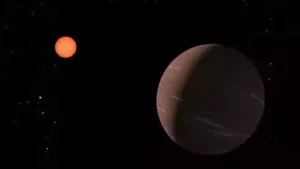
Could a recently discovered “super-Earth” have the potential temperature and conditions to sustain life?
The new exoplanet is situated “fairly close to us” — only 137 light-years away — and orbits within a “habitable zone,” according to NASA.
Astronomers say the planet, dubbed TOI-715 b, is about one and a half times the width of Earth and orbits a small, reddish star. The same system also might harbor a second, Earth-sized planet, which, if confirmed, “would become the smallest habitable-zone planet discovered by TESS [the Transiting Exoplanet Survey Satellite] so far,” NASA said in a Jan. 31 press release.
Due to the super-Earth’s distance from its parent star, it could be in a conservative “habitable zone” and harbor the right temperature for liquid water to form on its surface, which is essential to sustain life, according to the agency, which also added that “several other factors would have to line up, of course.”
NASA said the measurements of the habitable zone — “a narrower and potentially more robust definition than the broader ‘optimistic’ habitable zone” — put the newly discovered planet, and possibly the smaller Earth-sized planet, in “prime position” from its parent star.
The agency said that because of the short distance the super-Earth orbits from its parent star, a red dwarf that’s smaller and cooler than our Earth’s sun, a “year” for the planet is equal to 19 Earth days.
The tighter orbits mean the “planets can be more easily detected and more frequently observed,” NASA said.
